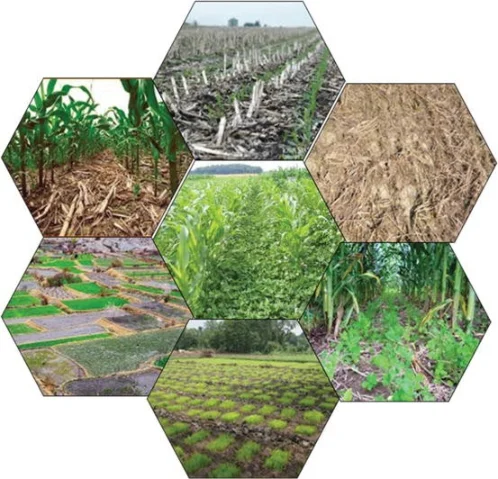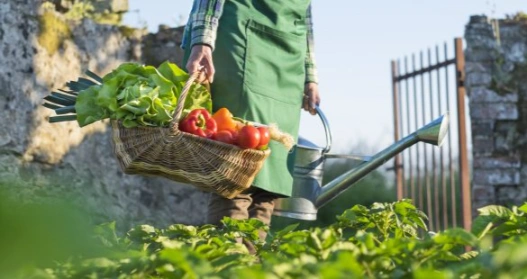Industrialized Agriculture is a term that you may have encountered in the news, in documentaries, or in debates about food and farming.
But what does it actually mean, and how does it affect us as consumers, citizens, and inhabitants of this planet?
In this post, we’ll delve into the definition, history, characteristics, pros, cons, alternatives, and guide you in making informed, responsible choices for your food and the environment.
What Is Industrialized Agriculture?
It is a form of modern farming that refers to the industrialized production of crops and animals and animal products like eggs or milk.
Industrial agriculture employs advanced machinery, genetic tech, economies of scale, new markets, gene patenting, and global trade for efficient farming.
These methods are widespread in developed nations and increasingly prevalent worldwide. Most of the meat, dairy, eggs, fruits and vegetables available in supermarkets are produced in this way.
It is also known as intensive agriculture, factory farming, or industrial farming. It is often contrasted with traditional agriculture, organic agriculture, or sustainable agriculture, which are forms of farming that rely more on natural processes, local resources, and ecological balance.
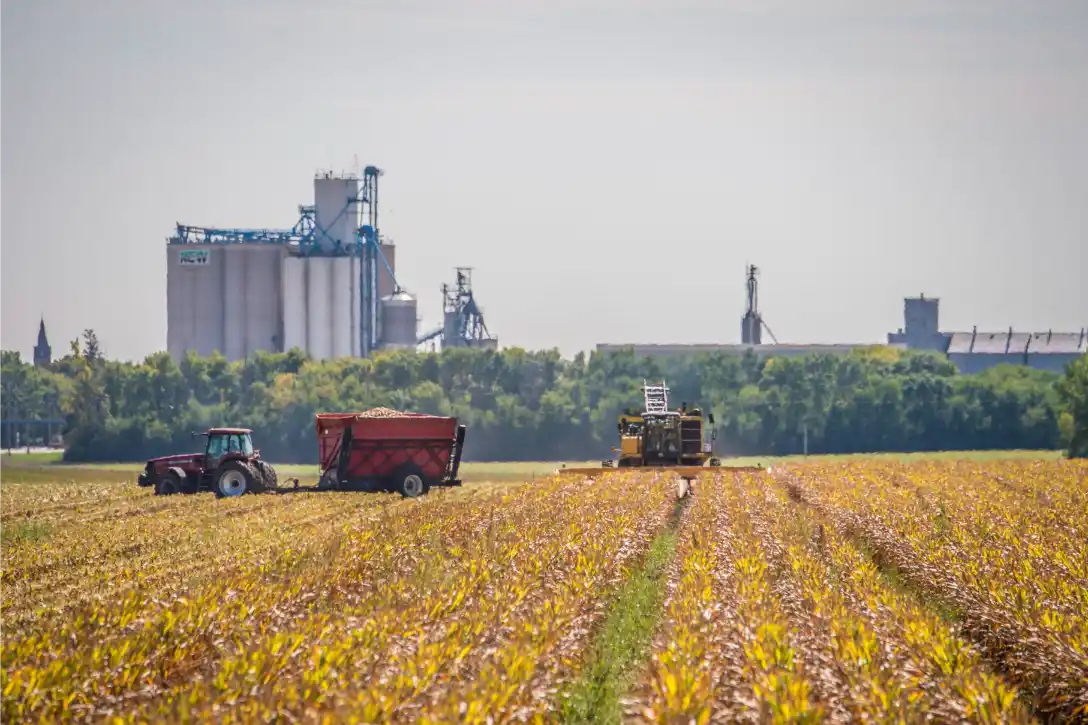
How Did Industrialized Agriculture Develop?
It arose hand in hand with the Industrial Revolution in general. The identification of nitrogen, potassium and phosphorus (referred to by the acronym NPK) as critical factors in plant growth led to the manufacture of synthetic fertilizers, making possible more intensive types of agriculture.
In the early 20th century, the discovery of vitamins revolutionized animal nutrition, enabling vitamin supplements by the 1920s. This advancement facilitated indoor livestock farming, minimizing exposure to harsh environmental conditions.
The discovery of antibiotics and vaccines facilitated raising livestock in concentrated, controlled animal feed operations by reducing diseases caused by crowding.
Developments in shipping networks and technology have made long distance distribution of agricultural produce feasible.
Agricultural production across the world increased dramatically as a result of these innovations. Between 1960 and 2015, agricultural production more than tripled, resulting in an abundance of low cost food and averting global food shortages.
However, not everything went as anticipated. Decades of industrial farming have taken a heavy toll on the environment and raised some serious concerns about the future of food production.
What Are Characteristics Of Industrialized Agriculture?
It has characterized by several features that distinguish it from other forms of farming. Some of the common features are:
| Common Features | Description |
|---|---|
| Monoculture | This is the practice of growing a single crop or raising a single animal species over a large area of land, often for several consecutive years. Monoculture allows for specialization, standardization, and mechanization of production, but also reduces biodiversity, increases vulnerability to pests and diseases, and depletes soil nutrients. |
| High Input | This is the use of large amounts of external inputs, such as synthetic fertilizers, pesticides, antibiotics, hormones, and water, to increase productivity and profitability. High input can boost crop yields and animal growth, but also cause environmental pollution, health risks, and resource depletion. |
| Concentration | This is the consolidation of ownership and control of production, processing, and distribution of agricultural products by a few large corporations. Concentration can create economies of scale, reduce costs, and increase efficiency, but also reduce competition, diversity, and quality, and increase inequality, exploitation, and corruption. |
| Globalization | This is the integration of agricultural markets and systems across national and regional boundaries. Globalization can create new opportunities, increase access, and lower prices, but also create dependency, vulnerability, and instability, and undermine local cultures, traditions, and sovereignty. |
Advantages Of Industrialized Agriculture
It has some advantages that make it appealing and dominant in the modern world. Some of the main advantages are:
It provides abundant and cheap food for a growing population. And has increased food production and availability, and reduced food prices and hunger, especially in developed countries. It is also improved food safety and quality by applying standards and regulations.
It creates economic growth and development, and significantly contributed to the growth of gross domestic product, income, and employment, particularly in the agricultural sector.
Moreover, it has also stimulated innovation, substantial investment, and international trade in the agricultural industry.
It enhances food security and resilience and has reduced the risk of food shortages and famines by increasing food stocks and reserves, and diversifying food sources.
It has also increased the ability to cope with shocks and stresses, such as climate change, natural disasters, and conflicts, by applying adaptive and mitigative measures.
Disadvantages Of Industrialized Agriculture
Some of the main disadvantages are:
Harms the environment and contributes significantly to climate change.
It is responsible for a large share of greenhouse gas emissions, resulting in considerable land degradation, water pollution, substantial biodiversity loss, and widespread deforestation.
Consumes a significant amount of natural resources, depleting water, energy, and soil, and generates considerable waste, including manure, plastic, and packaging.
It affects human health and wellbeing. Industrialized agriculture can expose humans to harmful chemicals, pathogens, and allergens, through food, water, air, and soil.
It can also cause malnutrition, obesity, and chronic diseases, by promoting unhealthy diets, lifestyles, and behaviors, and also affect mental health, by causing stress, anxiety, and depression, especially among farmers and workers.
It fosters injustice, favoring large, wealthy producers, perpetuating economic disparities, and marginalizing workers, women, minorities, and indigenous peoples.
Also erode cultural and ethical values, by disregarding animal welfare, human rights, and food sovereignty.
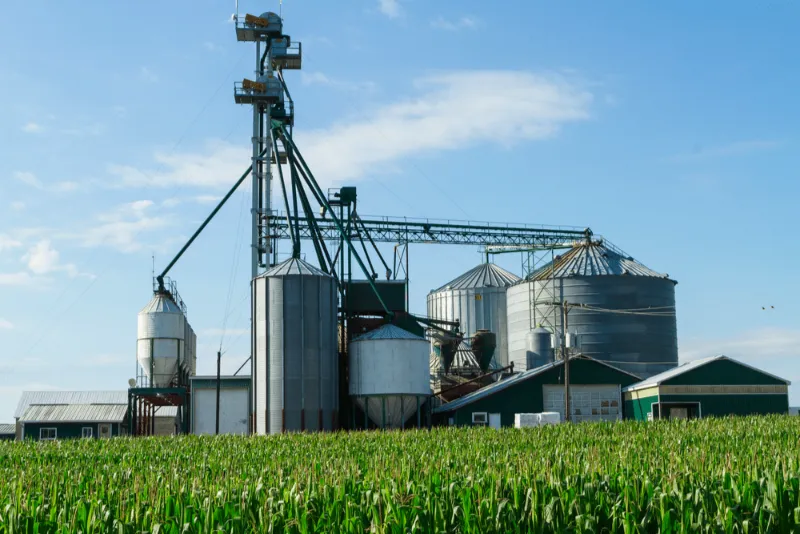
Alternatives To Industrialized Agriculture
It is not the only way to produce food and feed the world. There are many alternatives that are more sustainable, ethical, and resilient. Some of the common alternatives are:
Organic Agriculture
This is a form of farming that relies on natural processes and inputs, such as compost, manure, and biological pest control, and avoids synthetic chemicals, genetically modified organisms, and antibiotics.
Organic agriculture can improve soil health, biodiversity, and food quality, and reduce environmental impact and health risks.
Agroecology
This is a form of farming that applies ecological principles and knowledge to agricultural systems, such as crop rotation, intercropping, and agroforestry. Agroecology can enhance productivity, diversity, and resilience, and reduce dependency and vulnerability.
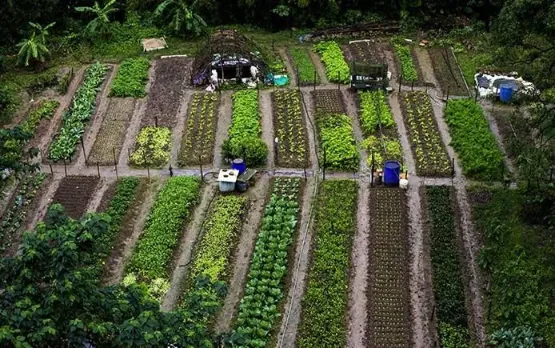
Permaculture
This is a form of farming that designs and maintains agricultural systems that mimic natural ecosystems, such as forest gardens, aquaponics, and urban farms. Permaculture can create self sustaining, regenerative, and harmonious systems, and reduce waste and pollution.
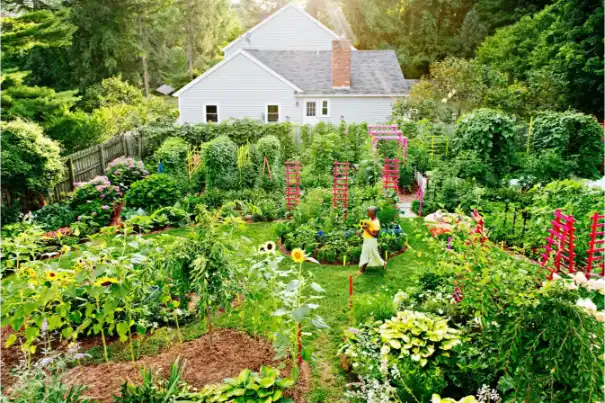
Local And Community Based Agriculture
This farming method emphasizes local production and consumption, fostering social bonds through initiatives like farmers’ markets, community-supported agriculture, and urban gardens.
Local and community based agriculture can increase food access, awareness, and security, and foster community engagement and empowerment.
Conclusion
Industrialized agriculture offers cheap food, economic growth, and food security but harms the environment, health, and social equity. Moreover, explore sustainable alternatives like organic, local, and fair trade options to support a healthier and more resilient food system.
Related Posts:
What Is Sustainable Agriculture: Elements, Benefits & Challenges
Plantation Farming: Benefits And Challenges
Contour Plowing: How Does Work, Implements And Benefits
Commercial Grain Farming: Main Uses And Impacts

Meet Our Expert Agricultural Administrator
Welcome to agrigreenhands.com, your dedicated hub for all things related to agricultural farming. Leading the way in our commitment to sustainable and innovative practices is Jawad Hussain, our esteemed administrator with a profound background in agriculture….

